Ways of Seeing
Alfred Yarbus’s science of visual attention
Sasha Archibald
At the heart of the study of eye movements—a small field, but one of great interest to advertisers, museum professionals, radiologists tracking diagnostic errors, and others—is the gulf between physiological reality and what we feel our eyes are doing. What we perceive, for instance, as a calm gaze at a tree in the distance, is actually a series of abrupt and disjointed eye movements. Even when seemingly fixed on the most stationary of objects, the eye drifts away and back again, jumps from side to side, and hovers around, but not on, the point of focus. In short, our subjective sense of visual concentration has no physiological corollary.
These micro-movements, unremitting and completely involuntary, are called “saccades”—a word originally used to describe the jittery movements of a horse being dressed. In 1965, Soviet scientist Alfred L. Yarbus proved what other researchers had long suspected: saccades are fundamental to vision. It is in between each of these darting movements that the eye does its essential business of seeing. When the eye is artificially fixed in place to eliminate saccades, the quick result is blindness. Yarbus was able to show that the symptoms of visual distraction are in fact indispensable to perception.
Yarbus made his discovery using an optical device of his own invention detailed in his book Eye Movements and Vision.[1] The device consisted of a rubber disc that he called a “cap,” which fastened directly on the eyeball. The cap was punctured by a pinhole in the center, and its rim was affixed to a small angled mirror. A tiny suction cup kept the apparatus tightly pressed against the cornea. In Yarbus’s basic study, a beam of light was directed towards the mirror, which moved in perfect concert with the cornea. As light reflected off the mirror, its movement was recorded on photosensitive paper, yielding a stunning result: a map of vision itself.
Stunning results notwithstanding, Yarbus’s device seems to have been one of the more torturous instruments ever fitted to the human eye. (Current attempts to accomplish the same ends painlessly involve the use of infrared light.) Applying the cap—imagine a very bulky contact lens—took several steps. First, plaster adhesive was used to pull away the subject’s upper and lower eyelids and expose as much of the curvature of the eye as possible. After the eye was anesthetized, the cap was attached, the mirror angle adjusted, and, finally, the object of vision revealed. Yarbus recommended that tests never exceed twelve minutes, but he reports that most of his subjects experienced an alarming and painful drying of the cornea after just two or three.
Besides tracking the twitches of an eye focused on an isolated point, the cap enabled the studies for which Yarbus is best known—studies that investigated the complex process of how we go about looking at an image. In these, Yarbus allowed his subjects free observation of a picture for a set amount of time. By using the cap, he was able to trace the route of the eye and then superimpose that path on the picture in question. Among other things, his tests yielded information on what people looked at first, second, and third; where the eye returned again and again; and what details most viewers missed.
Yarbus’s results disproved certain hypotheses of the time: that viewers receive an image much as a blind person would a sculpture—that is, by exploring its contours first—or that the eye will linger on areas that contain more detail. In fact, as Yarbus demonstrated, these and other factors—certain colors, degree of contrast, the image’s medium, the gender of the persons depicted in relation to the gender of the viewer—have no effect on viewers’ patterns of looking. Noting that his subjects consistently devoted special attention to some elements of a picture and showed indifference to others, Yarbus suggested an alternative logic to the distribution of attention, speculating that the eye instinctively gravitates toward details that promise to “explain” an image.
In Yarbus’s schema, our patterns of looking relate to the task of solving a picture, by which he meant discerning its narrative logic. Presented with an image, the eye begins a rapid fact-gathering mission, filtering out extraneous visual information and honing in on bits of explanatory detail. Given opportunity for extended looking, we do not turn our attention to an unexplored corner, but compulsively reinvestigate those elements that “allow the meaning of the picture to be obtained.”[2] Yarbus tested his conclusions by giving his subjects specific instructions, such as “Remember the clothes worn” or “Give the ages of the people.” He found that eye movement indeed varied accordingly—and in entirely predictable fashion. We are physiologically hardwired, the scientist concluded, to pin down a picture’s story.
Yarbus’s eye movement maps are certainly fascinating, but his simple-minded conclusion disappoints. The scientist’s reticence to find anything random, idiosyncratic, or nuanced in how we perceive images is perhaps explained by a certain trial variable, the repercussions of which Yarbus seems to have ignored: his choice of image.
Most of Yarbus’s studies were conducted using a classic Russian Realist painting by Ilya Efimovich Repin. Painted in 1884 in support of social reform, the image depicts a soldier returning home from exile in Siberia, greeted by his mother as his wife shyly lingers behind the door. The soldier’s elder son beams with happy recognition, while the younger daughter, too young to remember her father, hesitates at the table. Something of a stock image in Soviet visual culture, An Unexpected Visitor (also translated as Unexpected Return or They Did Not Expect Him), and the narrative it illustrates, were certainly familiar to Yarbus’s subjects. Given this familiarity, several of the scientist’s directives, such as, “Estimate the material circumstances of the family,” were perhaps better suited to propaganda than controlled scientific experiment. Moreover, the narrative of Repin’s painting was in fact its point; the picture circulated in Soviet culture precisely as an illustrative image.
Though we might be compelled to find explanations for what we see, as Yarbus suggests, we are equally driven to see what we expect. In the case of a picture without any known narrative, a picture that somehow escapes reference or recognizable form, a picture that is unlike anything we’ve imagined before, Yarbus unfortunately has little to say.
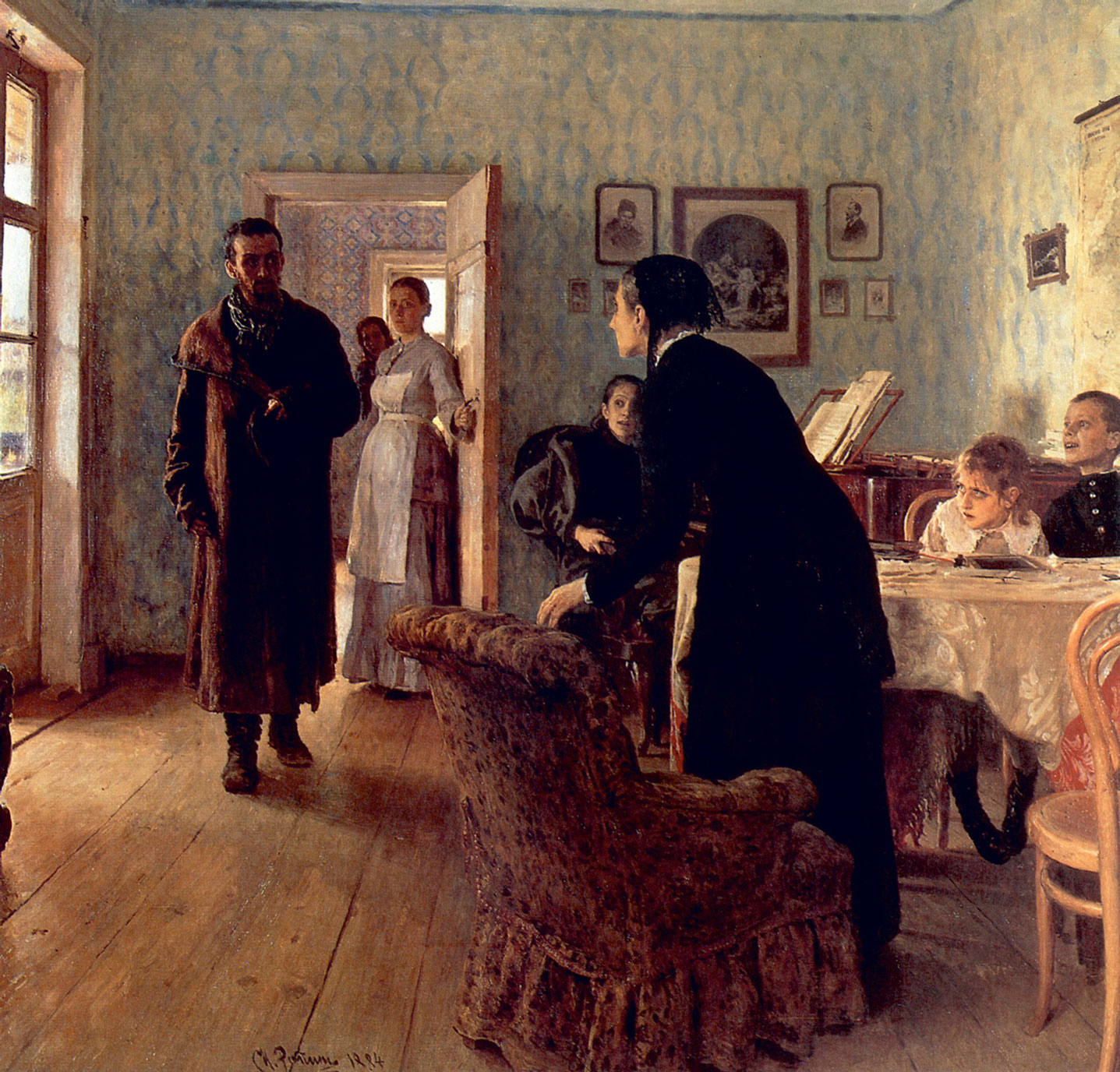
following: Maps of the eye movements of a single subject asked by Yarbus to 1) examine the painting freely, 2) estimate the material circumstances of the family, 3) assess the ages of the characters, 4) determine the activities of the family prior to the visitor’s arrival, 5) remember the characters’ clothes, and 6) surmise how long the “unexpected visitor” had been away. All maps are from Yarbus’s book Eye Movements and Vision.
Caveat lector! Yarbus’s original text simply juxtaposes the painting and the maps of the subject’s eye movements. The superimpositions offered here are our attempt to make the results of Yarbus’s study more vivid for you, our dear reader. However, the precise alignments between the painting and the eye movements were not always apparent in every case. These images are our best approximation.
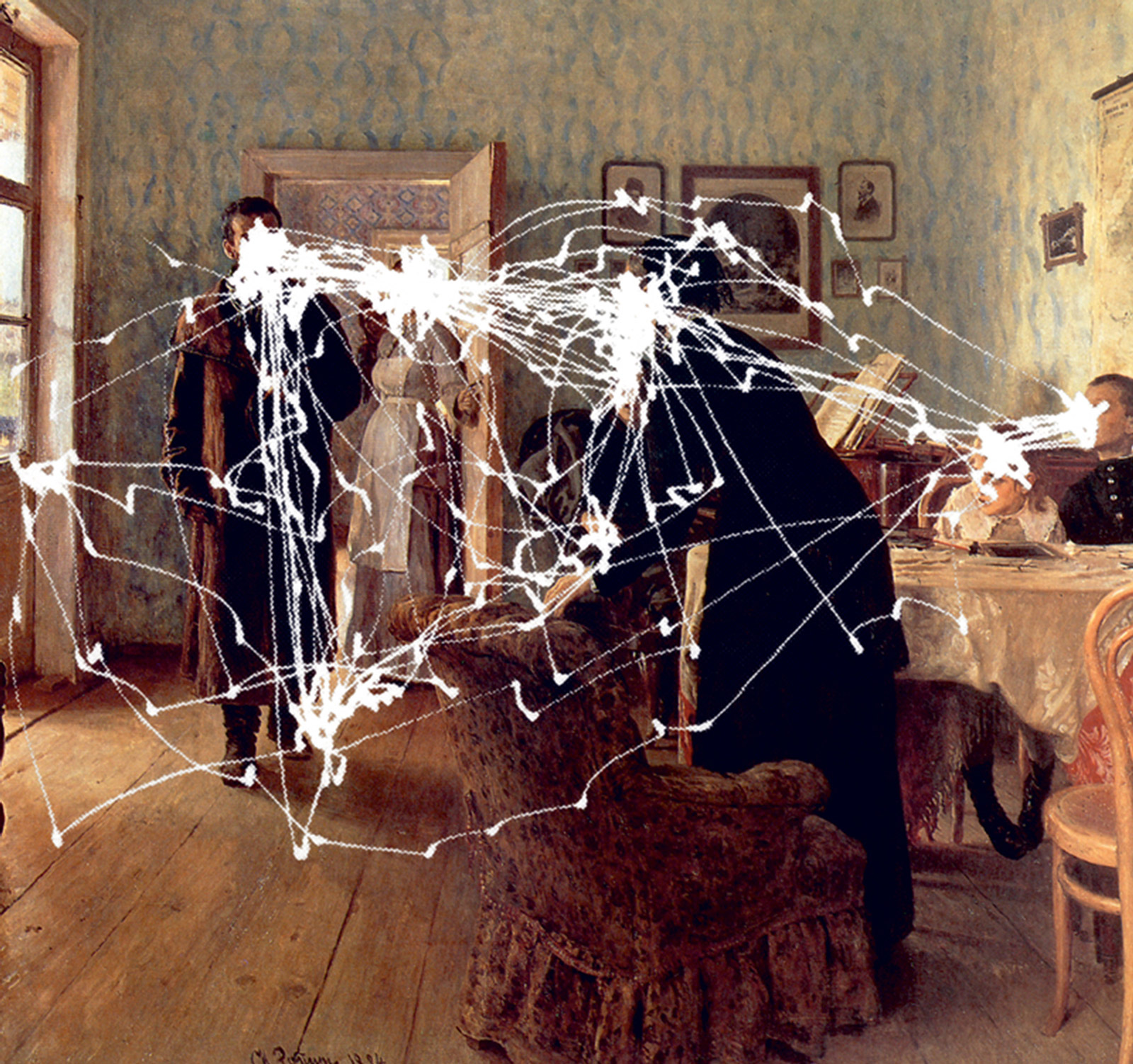
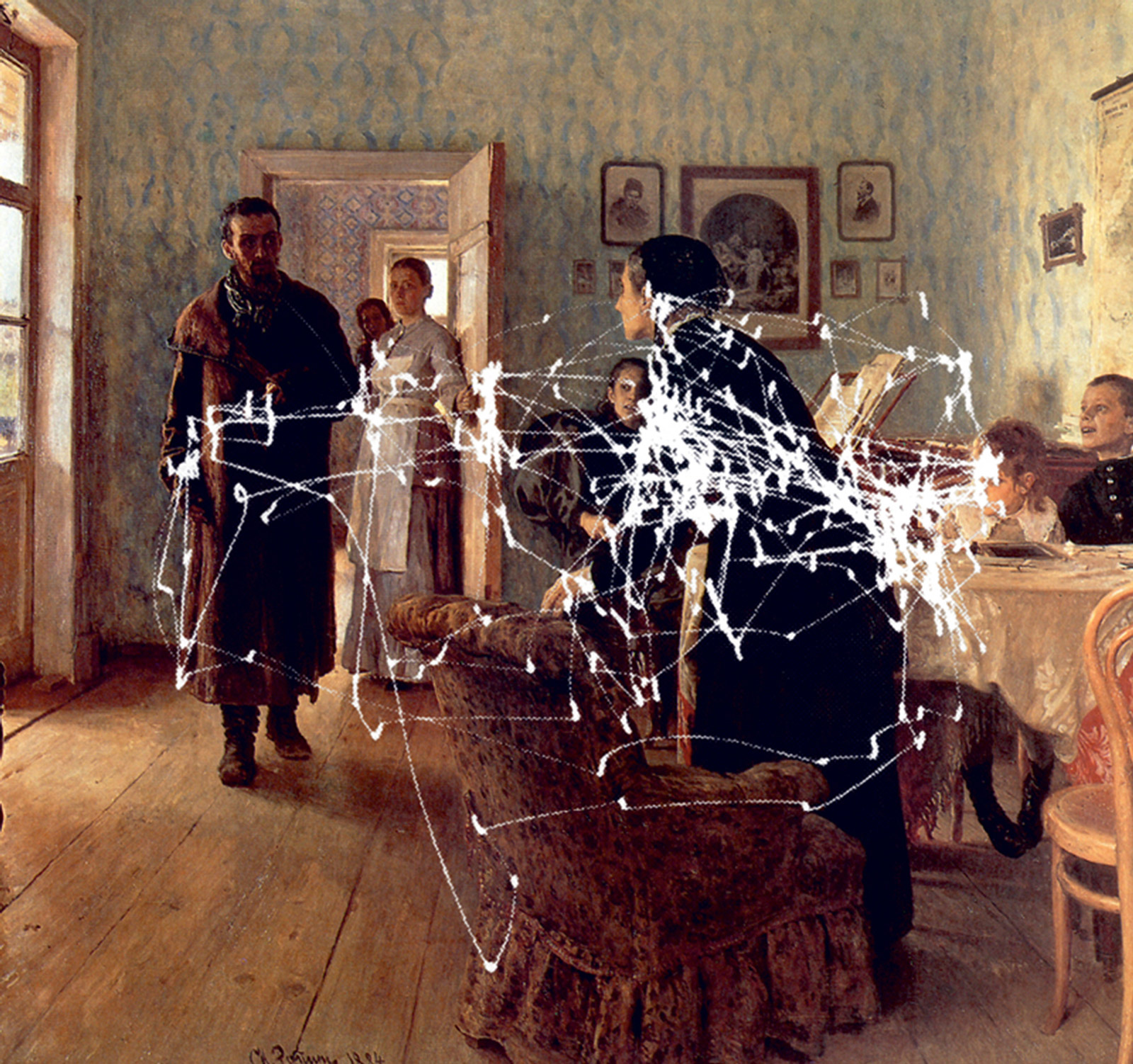


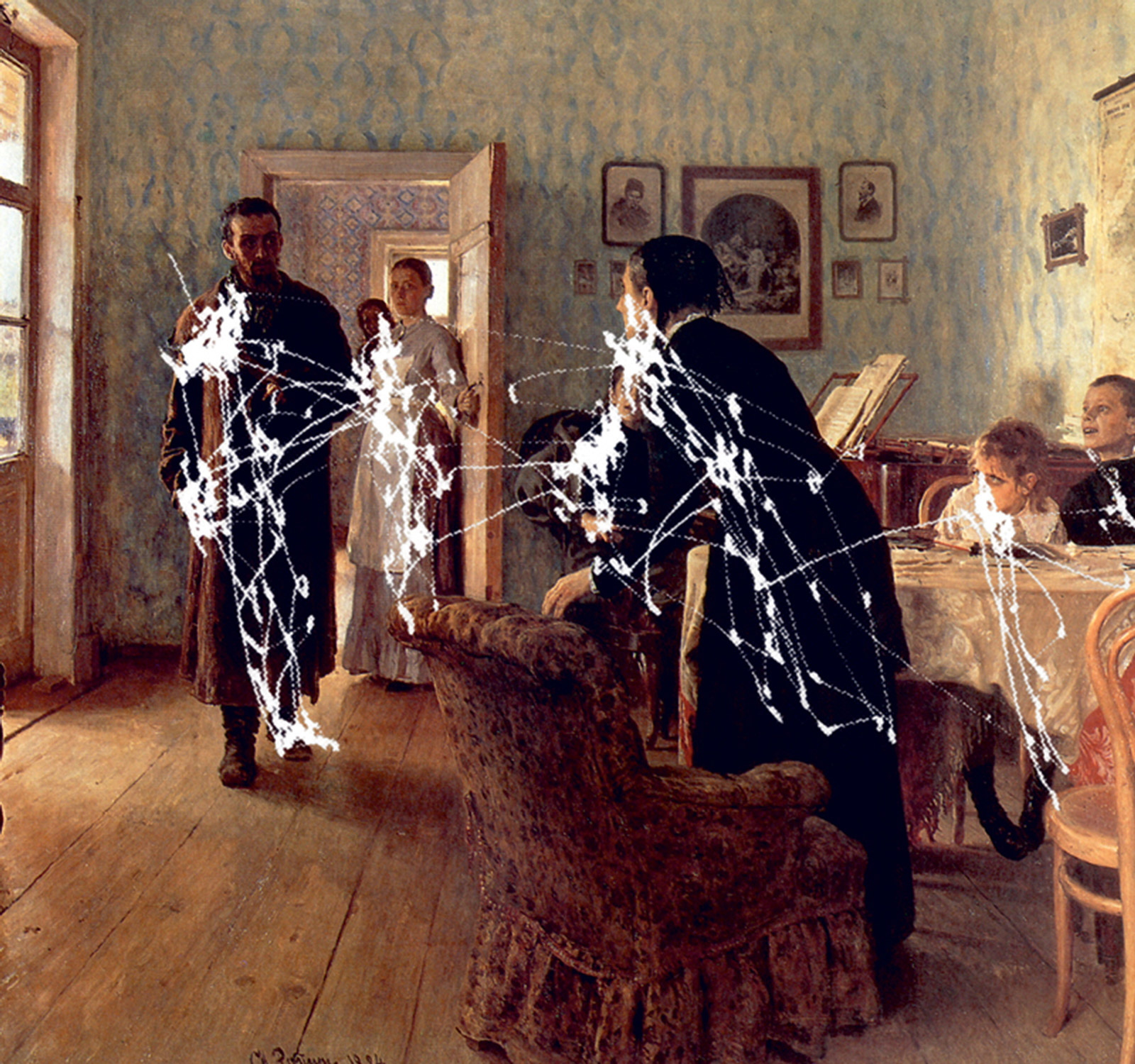
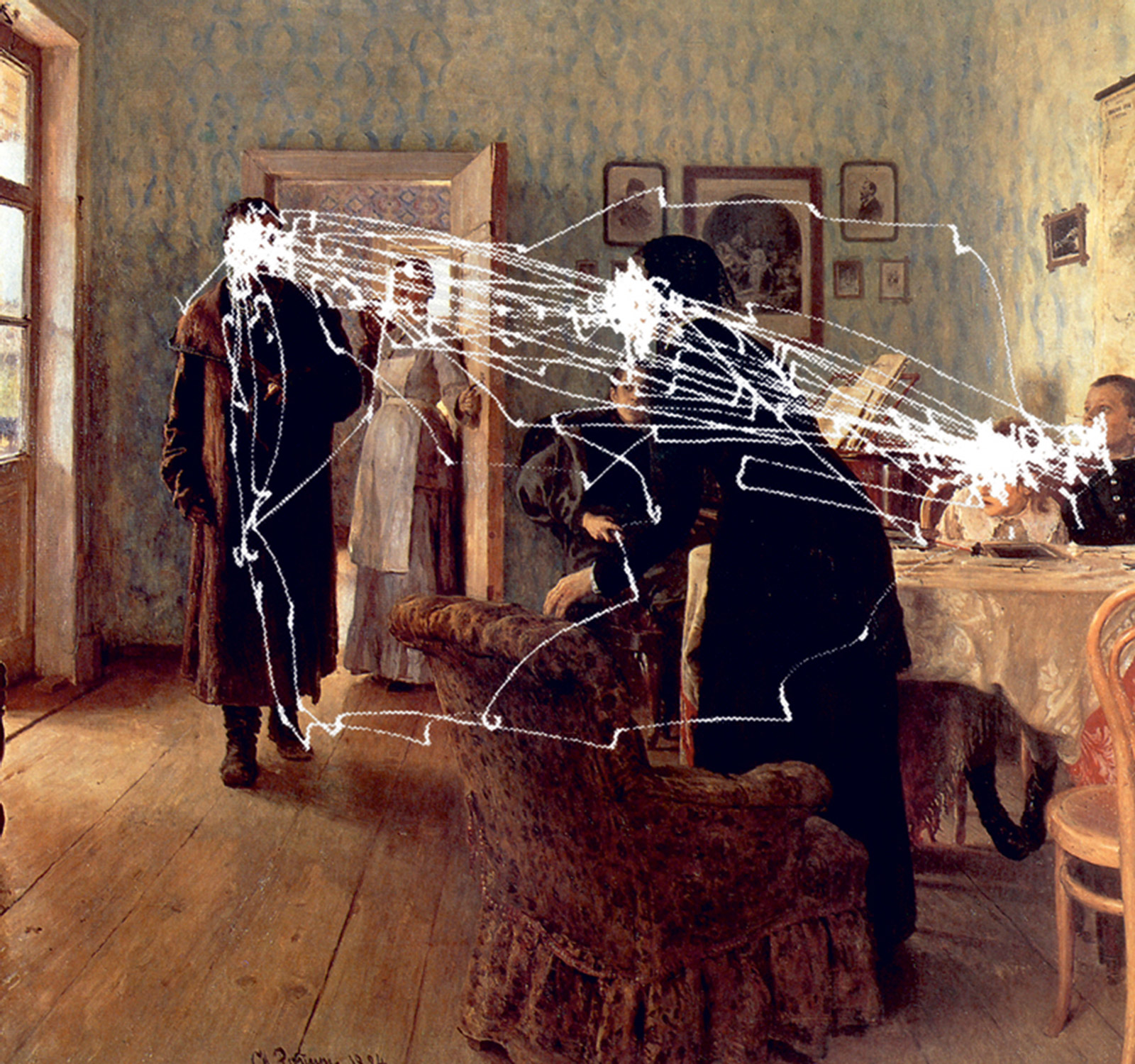
- Alfred L. Yarbus, Eye Movements and Vision, trans. Basil Haigh (New York: Plenum Press, 1967).
- Ibid., p. 190.
Sasha Archibald is an independent curator and writer based in Brooklyn.
Spotted an error? Email us at corrections at cabinetmagazine dot org.
If you’ve enjoyed the free articles that we offer on our site, please consider subscribing to our nonprofit magazine. You get twelve online issues and unlimited access to all our archives.